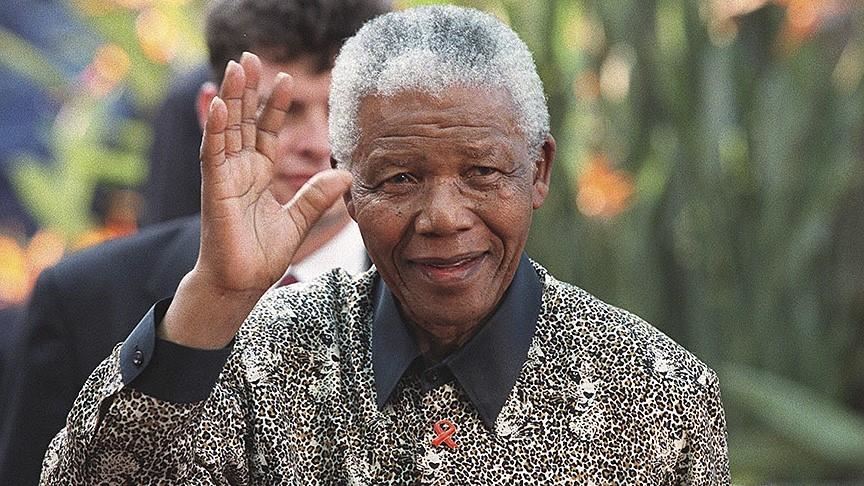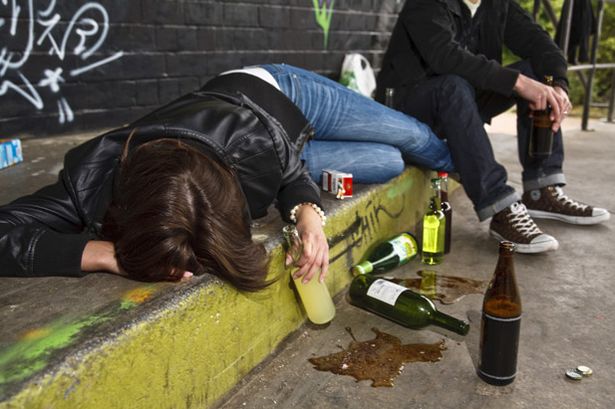My first semester of college, I'm going to sociology and English and psychology, and all I cared about was getting home and preparing for whatever audition I had.
Deviance and Social Control
(Part B)
by
Charles Lamson
Dimensions of Deviance
Deviance is an especially controversial topic: There is usually much disagreement not only about which behaviors are deviant and which are not but also about which behaviors should be strongly punished and which should be condoned or punished only mildly. As Kai Erikson noted, "Behavior which qualifies one man for prison may qualify another for sainthood since the quality of the act itself depends so much on the circumstances under which it was performed and the temper of the audience which witnessed it" (1966, Wayward Puritans: A Study in the Sociology of Deviance, pp. 5-6).
 |
IMAGE 1 Nelson Mandela
Consider former South African president Nelson Mandela (Image 1). Mandela was released from a maximum-security prison in 1990 after serving almost 30 years of a life sentence for his leadership of the movement to end apartheid, South Africa's racial caste system. The dominant white minority in South Africa regarded Mandela and other opponents of apartheid as criminals. But the black majority viewed him as a hero and a martyr. Until the black majority began to mobilize world opinion and other nations began to enforce negative sanctions against South Africa, the white minority was able to define Mandela's opposition to apartheid as a criminal activity.
The power to define which acts are legal and which are illegal is an important dimension of deviance.
The fact that people in power can define what behavior is deviant and determine who is punished fails to explain differences in definitions of deviance in society with different cultures. Behavior regarded as normal in one society may be considered highly deviant in another. For example, in the United States drinking alcoholic beverages is considered normal, but in Orthodox Islamic culture it is forbidden. Even within a society, members of certain social groups may behave in ways that are considered deviant by others. Thus the official norms of the Catholic Church do not permit the use of artificial methods of birth control, yet large numbers of Catholics use condoms, birth control pills, and other contraceptives. Similarly, the norms of Judaism require that the Sabbath be set aside for religious observance, yet many Jews work on the Sabbath and do not attend synagogue; they have occasionally been attacked by Orthodox Jews for violating that norm. Clearly, differences in values are another important source of definitions of deviance and of disagreements about those definitions.
Ascribed Statuses
Another dimension of deviance concerns attributes that are ascribed unavoidably at birth (e.g., race or physical appearance) or that a person cannot control (e.g., having a convict as a parent), in contrast to statuses that are achieved through actual behavior, which is usually voluntary. A criminal is deviant in ways that a mentally ill person is not, and criminal behavior is more costly to society. Yet in many situations a mentally ill person is labeled as deviant, and this label may actually drive him or her toward criminality. A related issue is how people who deviate from generally accepted norms manage to survive in societies where they are considered outsiders. In fact, deviant people often form their own communities with their own norms and values, and these deviant subcultures sustain them in their conflicted relations "normal" members of society.

IMAGE 2 Deviant Subculture
An important point is that deviant subcultures, which engage in prostitution, gambling, drug use, and other deviant behaviors, could not exist if they did not perform services and supply products that people in the larger society secretly demand. It would be wise, therefore, not to draw the distinction between deviant and normal people too sharply. Many people deviate from the norm, and their deviations create opportunities for others whose identities and occupations are deviant.
In sum, three dimensions of social life---power, culture, and voluntary versus involuntary behavior---create the major forces operating in any society to produce the forms of deviance that are typical of that society.
Deviance and Stigma
To narrow the range of phenomena we must deal with in discussing deviance, let us keep in mind the distinction Erving Goffman makes on page 3 of his book Stigma: Notes on the Management of Spoiled Identity (1963) between stigma and deviance. "The term stigma," Goffman stated, "refers to an attribute that is deeply discrediting" and that reduces the person "from a whole and usual person to a tainted and discounted one." People may be stigmatized because of ascribed statuses such as mental illness, eccentricity, or membership in a disvalued racial or nationality group. In some instances the stigma is visible and obvious to all as in the case of a disfigured person like John Merrick, commonly known as the Elephant Man. Suffering from a disease that grossly distorted his face, Merrick was rejected by society even though he was a highly intelligent person. In other cases stigma is revealed only with growing acquaintance, as in the stigma attached to the children of convicts. For the stigmatized person, the disqualifying trait defines the person's master status (Becker, 1963, The Outsiders: Studies in the Sociology of Deviance; Scull, 1988, Deviance and Social Control. In N. J. Smelzer (Ed.), The Handbook of Sociology). A blind person, for example may be an excellent musician and a caring parent, but the fact that he or she is blind will outweigh these achieved statuses except in unusual cases like that of Stevie Wonder.
Stigmatized people deviate from some norm of "respectable" society, but they are not necessarily social deviants. The term deviant, Goffman argued, should be reserved for people who are seen as declining voluntarily and openly to accept the social place accorded them, and who act irregularly and somewhat rebelliously in connection with the basic institutions (1963, p. 143). Among the people Goffman classified as social deviants are prostitutes, drug addicts, delinquents, criminals, jazz musicians, Bohemians, Gypsies, carnival workers, hobos, winos, show people, full-time gamblers, beach dwellers, homosexuals, and the urban unrepentant poor. Goffman's list is somewhat whimsical and leaves out more recent groups that are considered socially deviant, such as Internet pornographers; his point, however, is that these are examples of social groups that "are considered to be engaged in some kind of collective denial of the social order. They are perceived as failing to use available opportunity for advancement in the various approved runways of society" (1963, p. 144).

IMAGE 3 Deviant Behavior
According to the definition of stigma, the population of social deviance is smaller than that of stigmatized individuals; only some stigmatized behaviors are socially deviant (see Image 3). Deviant behaviors are characterized by denial of the social order through violation of the norms of permissible conduct. This point should be kept in mind as we continue our discussion of criminals and other people who are considered social deviants.
Deviance and Crime
Much of the study of social deviance focuses on crime. Crime is usually defined as an act, or the omission of an act, for which the state can apply sanctions. Those sanctions are part of the criminal law, a set of written rules that prohibit certain acts and prescribe punishment to be meted out to violators (Kornblum & Julian, 2001, Social Problems, 10th ed.). But the questions of which specific behaviors constitute crime and how the state should deal with them are often controversial.
In every society there are some behaviors that almost everyone will agree are criminal and should be punished and other behaviors that some consider criminal but others do not. All societies punish murder and theft, for example, but there is far more variation in the treatment of adultery, prostitution, and pornography. Indeed, the largest number of "crimes" committed in the United States each year are so-called public order crimes such as public drunkenness (see Image 4), vagrancy, disorderly conduct, prostitution, gambling, drug addiction, and certain homosexual interactions. Many sociologists claim that these are victimless crimes because they generally cause no physical harm to anyone but the offenders themselves (Silberman, 1980, Criminal Violence, Criminal Justice; Thio, 1998, Deviant Behavior). Not all social scientists agree with this view, however. Some point out that crimes like prostitution actually inflict damage on society because they are usually linked with an underworld that engages in far more serious and costly criminal activities (Wilson, 1977, Thinking about Crime).

IMAGE 4 Public Drunkenness: A Victimless Crime?
*MAIN SOURCE: SOCIOLOGY IN A CHANGING WORLD, 6TH ED., 2003, WILLIAM KORNBLUM, PP. 183-185*
end
|

No comments:
Post a Comment